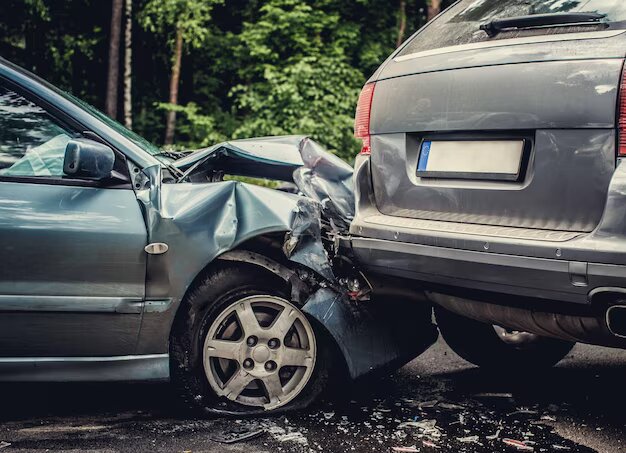The Impact Of Weather On Car Accident Claims In Minnesota
30 January 2024
5 Mins Read

toc impalement
In Minnesota, known for its harsh winters and unpredictable weather, understanding the impact of weather conditions on car accident claims is crucial for any attorney handling these cases. The state’s often treacherous winter weather, including snow, ice, and reduced visibility, can significantly influence both the occurrence of accidents and the outcomes of related legal claims.
Weather And Car Accidents: A Statistical Overview

Minnesota’s weather patterns play a notable role in road safety. According to the Minnesota Department of Transportation, winter weather conditions contribute to a significant number of accidents each year. These conditions not only increase the likelihood of accidents due to slippery roads and reduced visibility but also complicate the process of establishing fault and liability.
Understanding Negligence In The Context Of Weather
In Minnesota, as in many states, the concept of negligence is central to determining liability in car accident cases. This principle requires drivers to exercise reasonable care under the circumstances. During adverse weather conditions, what constitutes ‘reasonable care’ changes. Drivers are expected to adjust their speed, following distance, and overall driving behavior to accommodate the weather conditions. Failure to do so can be seen as negligence.
Challenges In Proving Liability
Proving liability in weather-related car accidents presents unique challenges. Attorneys must often rely on a combination of eyewitness testimony, police reports, and, if available, weather reports to reconstruct the circumstances of the accident. In some cases, expert testimony from meteorologists or accident reconstruction specialists may be required to establish how weather conditions contributed to the accident.
Comparative Fault In Minnesota
Minnesota follows the doctrine of comparative fault, which allows for the distribution of fault among multiple parties. In weather-related accidents, this can mean that both parties may be found partially responsible. For example, if one driver was speeding during a snowstorm and another failed to use headlights, both might share liability.
Insurance Considerations

Weather also plays a significant role in how insurance companies assess claims. In Minnesota, insurers may take into account the severity of the weather at the time of the accident. However, drivers are still expected to operate their vehicles safely regardless of weather conditions. As such, claims that involve weather-related negligence can be complex, often requiring detailed investigation and negotiation.
Documenting Weather Conditions
For Minnesota car accident attorneys, documenting the exact weather conditions at the time of the accident is crucial. This can involve collecting data from weather stations, obtaining photographs of the accident scene showing weather conditions, and gathering statements from witnesses about the weather’s impact. This documentation can be vital in establishing the extent to which weather played a role in the accident.
Role Of Governmental Weather Advisories
In some cases, the presence of governmental weather advisories at the time of the accident can impact a claim. If, for example, a driver chose to travel during a severe weather warning, this decision could be factored into the negligence assessment.
Impact On Damages And Compensation
The role of weather in an accident can also influence the damages and compensation awarded in a case. In situations where weather is a significant factor, it might reduce the liability of a driver, thereby impacting the compensation the plaintiff receives. Understanding how to effectively argue for or against the influence of weather is a key skill for attorneys in these cases.
Case Law And Precedents
Minnesota case law provides guidance on how courts have previously handled weather-related car accident claims. Attorneys should be familiar with relevant precedents, as these can offer insights into how current cases might be adjudicated.
The influence of weather on car accident claims in Minnesota cannot be overstated. For attorneys handling these cases, a deep understanding of how weather impacts
driving conditions, liability, and the overall legal process is essential. Successfully navigating these claims requires a multifaceted approach: thorough knowledge of state laws, an ability to interpret and utilize weather data effectively, and the skill to argue how weather conditions interact with the actions of the involved parties.
Key Considerations For Attorneys

- Detailed Understanding of Weather Patterns: Familiarity with common weather conditions in Minnesota and their typical impact on driving is essential. This includes understanding how snow, ice, fog, and even low sun can affect road safety.
- Expertise in Minnesota Traffic Laws: A thorough understanding of how Minnesota traffic laws apply in adverse weather conditions is crucial. This includes laws regarding speed limits, the use of headlights, and other safety regulations that become especially pertinent during poor weather.
- Skillful Use of Evidence: Gathering and effectively utilizing evidence is key. This includes weather reports, photographs, witness statements, and any other documentation that can substantiate how weather conditions contributed to the accident.
- Navigating Insurance Complexities: Attorneys must be adept at dealing with insurance companies that may use weather as a factor in their assessment of claims. This involves understanding insurance policies and how they are interpreted in the context of weather-related accidents.
- Effective Application of Comparative Fault Principles: Being able to argue for a fair application of comparative fault in weather-related accidents is important, especially in cases where multiple factors, including weather, contributed to the accident.
Read Also: What To Expect During A Free Case Evaluation For A Personal Injury Lawyer In Indiana
Weather-Related Case Strategies
Developing effective case strategies in weather-related car accident claims involves several key steps:
- Accurate Reconstruction of the Accident: Utilizing expert testimony to reconstruct how the accident occurred and the role weather played is often necessary.
- Demonstrating Duty of Care: Clearly establishing the duty of care expected under the specific weather conditions at the time of the accident, and how this duty was breached.
- Maximizing or Minimizing Liability: Depending on the client’s position, either maximizing the role of adverse weather to mitigate liability or minimizing it to establish the negligence of the other party.
- Pursuing Fair Compensation: Ensuring that any reduction in compensation due to weather-related factors is fair and proportionate to the circumstances.
Client Counseling And Risk Management
Part of an attorney’s role is also to counsel clients on how to manage risks in adverse weather conditions. This can include advice on driving safely in various weather conditions, understanding the legal implications of driving during severe weather advisories, and how to document circumstances in the event of an accident.
In Minnesota, where weather can be a formidable force, its impact on car accident claims is a significant aspect of legal practice in this area. Attorneys must not only be well-versed in the legal framework but also be adept at handling the unique challenges that weather brings to these cases. By mastering the intersection of law, weather, and road safety, legal professionals can effectively advocate for their clients, ensuring that justice is served even when nature plays a role.
In sum, weather is a critical factor in car accident claims in Minnesota, presenting unique challenges and opportunities for legal professionals. Navigating these cases successfully requires a blend of legal acumen, meteorological understanding, and strategic prowess, all aimed at achieving a fair and just outcome for clients facing the often unpredictable and hazardous Minnesota weather.


















Comments Are Closed For This Article